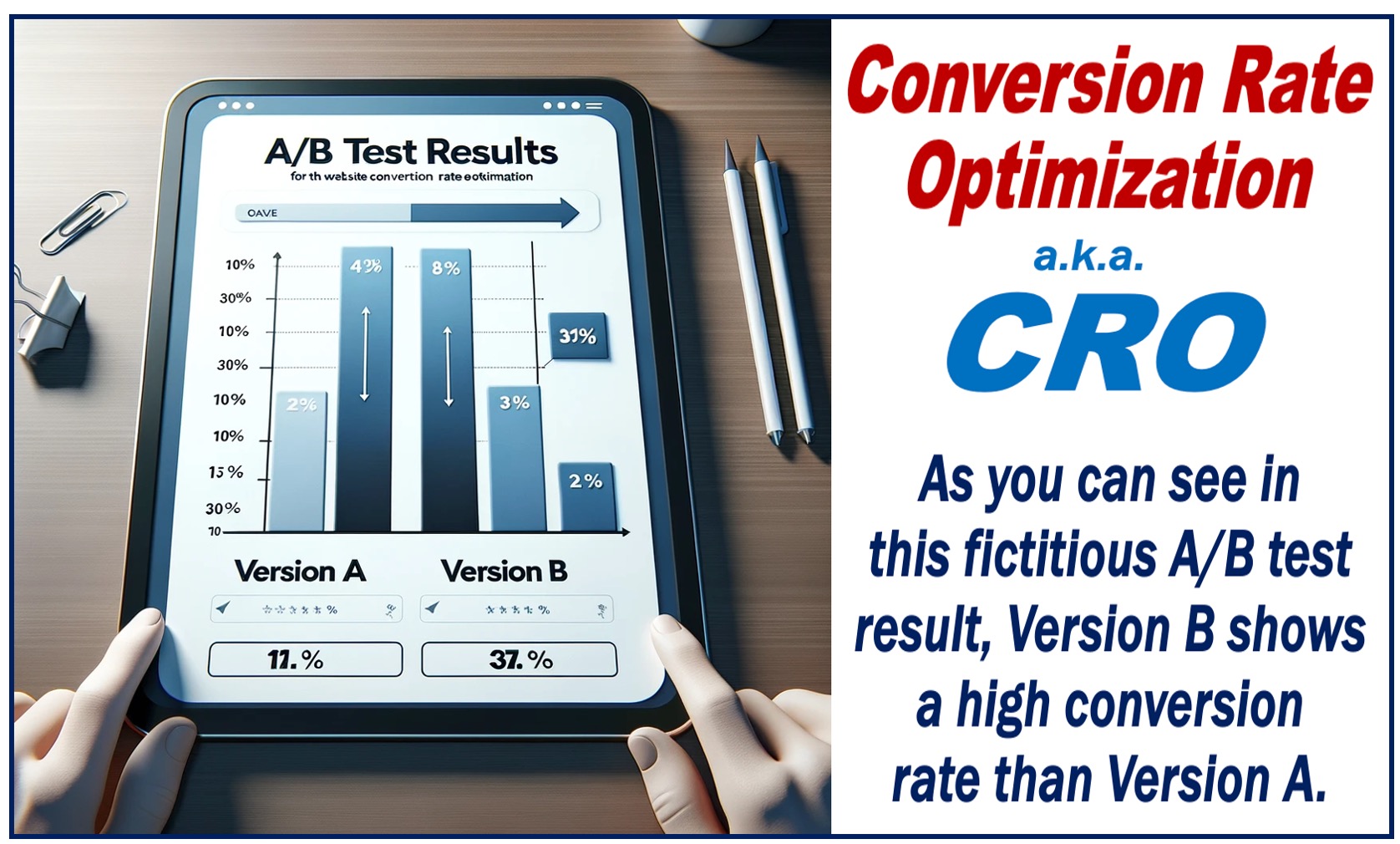Conversion Rate Optimization (CRO) is the process of improving or increasing the percentage of website visitors who take a desired action. The desired action may be:
- Making a purchase.
- Signing up for a newsletter.
- Completing a form.
- Downloading a brochure.
- Requesting a quote or more information about a product or service.
- Sharing content on social media platforms.
- Engaging with online chat services.
- Using an interactive tool or calculator on the site.
- Referring a friend or using a referral code.
Analyzing user behavior, testing variations, and implementing changes are all done frequently to improve conversion rates.
“Conversion rate optimization seeks to increase the percentage of website visitors that take a specific action by methodically testing alternate versions of a page or process, and through removing impediments to user experience and improving page loading speeds.”
Key components
The following are the key components of CRO:
-
Data analysis
Using analytic tools to understand user behavior and identify areas for improvement.
-
A/B Testing
Comparing two versions (A and B) of a website or marketing campaign in order to determine which converts visitors more effectively.
-
User experience (UX) optimization
Improving the overall user experience, making it easier for visitors to enjoy the visuals of the website and then convert.
-
Call-to-Action (CTA) Optimization
Enhancing the effectiveness of CTAs to encourage desired actions.
-
Landing page optimization
Making landing pages more likely to convert by optimizing them to meet or exceed user expectations.

Process of CRO
Here are the processes in chronological order:
-
Research and analysis
Understanding user behavior by using data analysis and identifying areas for improvement.
-
Hypothesis creation
Creating hypotheses about modifications that might improve conversion rates.
-
A/B Testing
Using A/B testing to determine which version is better.
-
Implementation
Making changes based on the results of successful tests.
-
Continuous monitoring
Keeping track of performance and making additional adjustments as necessary.
Importance
CRO is very important for many reasons. Here are the main reasons:
-
Increased ROI
Higher conversion rates lead to a higher return on investment (ROI).
-
Enhanced user experience
CRO includes improvements to user experience, which positively impacts overall satisfaction.
-
Data-driven decision-making
CRO uses testing and data analysis to make sure choices are supported by facts rather than speculation.
-
Competitive Advantage
In the digital landscape, websites and campaigns that implement effective CRO have an advantage over competitors.
Challenges
Here are the three main challenges that come with CRO:
-
Complexity
CRO encompasses a multitude of variables, making the identification of the most impactful changes a complex task.
-
Resource intensive
Constantly testing and optimizing requires time, effort, and in some cases financial investment.
-
Changing user behavior
User behavior and preferences evolve, they are not static. As a result, CRO strategies need constant refinement and adaptation to stay effective.
Tools
The following tools are instrumental in facilitating effective CRO:
-
Google analytics
This tool is essential for tracking and analyzing website traffic.
-
A/B testing tools
These are critical for testing different variations of webpages to determine which performs better. Popular options include Optimizely, VWO (Visual Website Optimizer), and Google Optimize.
-
Heatmap and session recording tools
Tools like Crazy Egg and Hotjar offer visual representations of how users interact with a website.
Video – What is Conversion Rate?
This video, from our sister channel on YouTube – Marketing Business Network, explains what the term ‘Conversion Rate’ means using simple and easy-to-understand language and examples.
Written by Nicolas Perez Diaz
